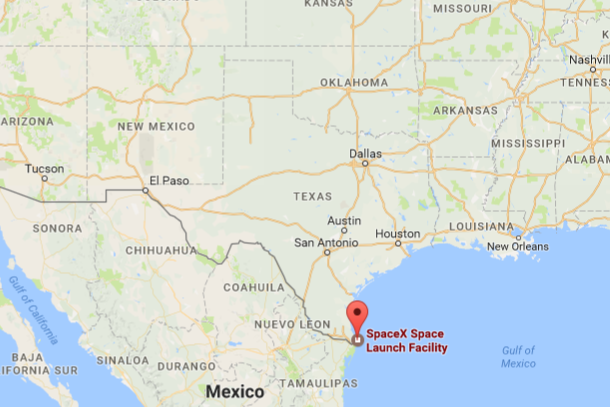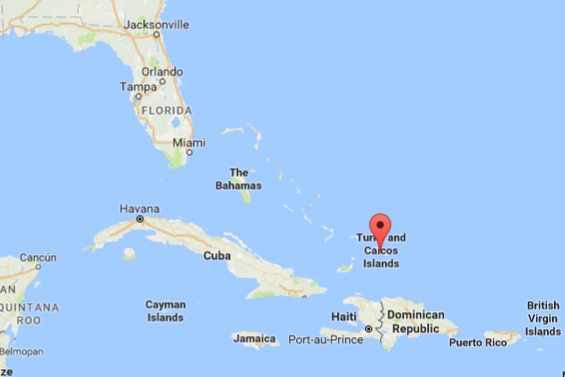SpaceX Launchpad 39A, KSC | Photo: Victor R. Ruiz, CC BY 2.0
There’s a little news over at r/spacex about the progress of the rocket company’s new launch facility being built near Boca Chica, Texas. There are a number of good reasons for putting it there (and I’ll get to those), but, being Canadian, I started to wonder where the best place would be to launch rockets in Canada. That’s how we got to this post.
***
So the new launch pad in Boca Chica, Texas, is about as far to the south as you can get in the state without being in Mexico.

There are good reasons for this. Mostly they come down to (a) being as far south as possible, and (b) having a lot of water to the east. I’ll explain.
The reason the US launches the vast majority of its rockets from Florida — despite hurricanes and sea-level rise — is physics. The Earth spins from west to east, and, because the Earth’s a sphere, the part that’s moving the fastest is the equator. If you’re standing right on top of the equator, you’re moving at roughly 1037 miles per hour. That’s free inertia for launching.
The Kennedy Space Center sits at 28.57°N, so it’s only going about 911 miles per hour. But since it’s one of the southernmost points in the US, it’s a fair tradeoff: “within your borders” is usually a good thing, and not having to cross an ocean generally keeps costs down. I’m looking at you, Puerto Rico.
Boca Chica, Texas is at 26°N — even further south than the KSC — so it’s going roughly 932 miles per hour.
Now, there are other kinds of launches where this doesn’t matter — like polar orbits and retrograde (against the Earth’s spin) orbits — but they’re more energy-intensive and limited to specific circumstances. That’s why SpaceX doesn’t launch from California very often. Launching to the east from the southernmost point you can is best.
This brings us to the second reason SpaceX has chosen the place: the water to the east.
See, rockets are very-well-controlled bombs. The explode in slow-motion in a single direction, and use that to go up and to the side. Mostly to the side, actually. In order to keep falling and continually miss the Earth, the International Space Station goes sideways at 17,150 miles per hour (roughly). That takes a lot of energy, and if things go wrong — like if it crashes, say — you want a whole lot of nothing under the flight path.
Which brings us to Canada.
Canada has been blessed with a lot of things, but rotational momentum isn’t one of them. If you wanted to launch into a (non-polar, non-retrograde) orbit from Canada, you don’t have many good options. The southernmost point is Pelee Island, in Lake Erie.

It’s southerly-ish, sitting at 41.77°N (take that, 49th parallel!) and goes at roughly 774 miles per hour. And it does have some water to the east, but due directly that way there’s only about 50 miles of water (which isn’t great), and on top of that, you’re pretty much immediately flying into US airspace, which they probably wouldn’t take kindly to.
Now you could launch from Toronto, which sits at 43.65°N and goes at 750 miles per hour.

Note that you could just skirt the US border for the first 80 miles, at which point you might just no longer be violating their airspace. Plus there’s a good hundred miles of open water to crash into if you are having a bad problem and you do not go to space that day. But if the residents of Toronto Island (yes, Americans, Toronto has an island) don’t take kindly to the sound of airplane engines, I’m guessing rockets are pretty much right out.
So what about the Canadian east coast? Top on that list would be Cape Sable Island, the southernmost point in Nova Scotia.

Cape Sable Island sits at 43.47°N — that’s south of Toronto — and at 753 miles per hour gets you a full 3 miles per hour more than Ontario’s capital (not Canada’s! Americans take note!). It’s not the best — compared with Kennedy Space Center it starts you off at a 158 mile-per-hour deficit — but that’s not the worst idea ever. It could potentially work, if we ever started to launch our own rockets some day. A couple of companies have suggested Alder Point, also in Nova Scotia, but a good deal northeast, and I’m not sure of the reasoning there.
But there’s one other alternative: colonialism!
(This is where the post gets funny, kind of.)
See, France launches rockets. (Did you know that? They do.) And they do it out of Guiana, a French colony (“overseas department and region of France”) on the east coast of South America. (Did you know France still had a colony in South America? They do.)
And maybe Canada could get in on that game.
See, for decades, on and off, people have been suggesting that the lovely little islands of Turks and Caicos should join Canada as another province.

If they did that, we’d have a lovely little spot only 21.69°N, with 964 miles per hour for free, and a whole lot of ocean to the east in case of Rapid Unscheduled Disassemblies. Of course we’d have to build up a rocket construction infrastructure there, and of course we’d need to actually have them join the country, and the whole thing would probably be impossible from a logistical standpoint anyway, but hey — options, people!
Anyway, before you go getting excited, Canada doesn’t even have a program for orbital rockets, and given all the red tape and politics, it’ll probably never happen. But if it did, well, we’d have options.
Have a great day, people. I’m going to spend mine imagining the residents of Toronto Island freaking out about the thunderous roar of Canadian orbital rockets.
***
Thanks for reading! Except for the very *very* occasional tip (we take Venmo now!), we only get paid in our own (and your) enthusiasm, so please like This Week In Tomorrow on Facebook, follow us on Twitter @TWITomorrow, and tell your friends about the site!
***
Richard Ford Burley is a human, writer, and doctoral candidate at Boston College, as well as Deputy Managing Editor at Ledger, the first academic journal devoted to Bitcoin and other cryptocurrencies. In his spare time he writes about science, skepticism, feminism, and futurism here at This Week In Tomorrow.

